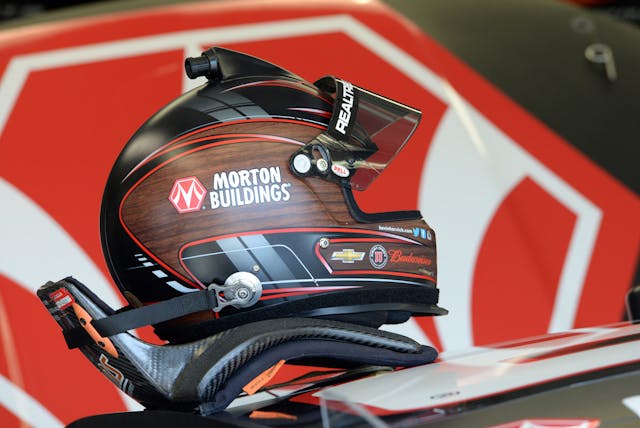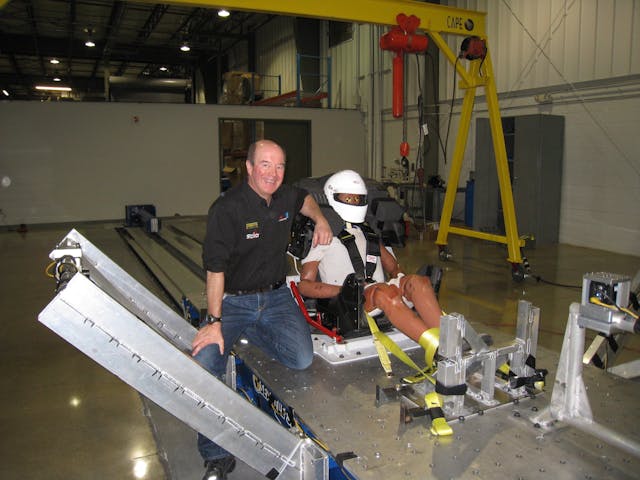Safety-gear guru Joe Marko shares his industry insight
In business, being in the right place at the right time is only half of the winning formula. You also need the right product for the right audience.
Joe Marko opened HMS Motorsport in suburban Boston in 1995 as a hobby/business after a successful career selling hotel-management software. He specialized in BMWs mostly because he was a BMW guy who’d bought a 2002 tii new in 1973. He still owns it today.
HMS took off when Marko created rollbars for the new Z3. This got him involved both personally and professional in the school and track-day worlds. His search for a good aftermarket racing harness brought him to a German company called Schroth Racing, which manufactured a four-point “rally” belt.
Marko liked the product so much that he flew to Germany to meet company owner Carl Schroth. Turns out that Marko was impressed by Schroth’s engineering acumen, and Schroth was impressed that Marko had come all the way from the United States. Before long, HMS was Schroth’s exclusive American distributor.
Fast forward to December 2001. To raise their profile and hawk their five- and six-point racing harnesses, Marko and Schroth manned a tiny booth at the Performance Racing Industry Show, which is basically SEMA for the motorsports world. There, two intense young men started peppering them with technical questions. A crowd gathered around them.
“It was Ryan Newman, who was the hot rookie driver in NASCAR, and his engineer, Matt Borland,” Marko says. “We didn’t have any idea who they were. Finally, they said, ‘We’re with Penske. We’d like you to come to Charlotte next week because NASCAR is trying to develop a new seat belt spec.’”
This was at the end of the year that had begun so calamitously with the death of Dale Earnhardt at Daytona, and NASCAR was belatedly trying to raise its woeful safety game. In Charlotte, Marko and Schroth met NASCAR safety honcho Steve Petersen. Schroth and Marko helped him write NASCAR’s upgraded safety standards. This led to HMS becoming the first retailer of the HANS Device—a head-and-neck restraint that is clipped to the helmet and rests on the driver’s shoulders. Before long, HMS was a major player in the safety space.

HMS now reps high-end gear ranging from carbon-fiber Schuberth helmets to RINI personal-cooling systems. Between retail and wholesale sales, it generates $7.5 million in annual revenue from a 12,000 square foot store near Charlotte and a satellite facility in Massachusetts. Virtually all of the cars in the NASCAR Cup Series are fitted with Schroth harnesses, and unlike his competitors, Marko says, “We don’t give any belts away for free.”
But professional racing accounts for, at most, one-third of Marko’s business. In recent years he’s benefitted from the growth of new amateur racing groups—Lemons, ChampCar, World Racing League, and American Endurance Racing—to augment traditional sanctioning bodies like SCCA and NASA (not to mention marque-specific clubs for Porsches and BMWs).

The other major prong of HMS’s business is track-day denizens. As you might imagine, Marko has plenty of safety advice to offer. He says serious track rats ought to install Schroth QuickFit belts—a HANS-compatible four-point harness that attaches to the factory seatbelt receptacles, so no drilling is required. The downside, aside from the hefty price, is that the belts are approved on a model-by-model basis, and if your car isn’t on the list, you’re out of luck.
Marko warns people who use the factory setup in their cars not to disable the airbags. Also, don’t wear heavy clothing or a large belt buckle or keep anything in your pockets that might prevent the seat belt from riding properly over the pelvis. If the seat belt mounts to the frame rail rather than the seat itself, he advises drivers to cinch down their belts while the seat is as far from the steering wheel as possible. “Then move your seat forward,” he says. “This makes the belt even tighter and pre-locks the inertia reel.
Other than helmets, most track-day organizers don’t require personal safety gear. Nevertheless, Marko won’t go on track wearing anything but racing shoes because sneakers are prone to hanging up between the pedals. He also recommends gloves for better purchase on the steering wheel. Red or another bright color is best because it makes hand signals more visible.

Regarding helmets, Marko says many drivers make a potentially catastrophic mistake when they leave the visors up. He’s seen many side impacts that have sent the sideview mirror hurtling dangerously through the cockpit. “Also,” he adds, “if you get into an impact, the airbag can catch the top of the visor if it’s open and push your head back much more violently.”
When it comes to track days, Marko knows whereof he speaks. He’s a longtime instructor for the BMW Car Club of America. Or at least he was until recently, when a student of his totaled a 2021 M3 after losing control in the Climbing Esses at VIRginia International Raceway. The collision set off all the airbags and prompted Marko to rethink the wisdom of riding shotgun.
Despite this wreck, Marko remains committed to keeping HMS at the track, and not just in a sales capacity. “I encourage the staff to participate in events so that they have first-hand experience with the products they’re talking about,” he says. In fact, he covers up to $1500 a year in entry fees and miscellaneous costs for his 16 employees.
Meanwhile, Marko is building a spec E36 that will be available for HMS workers to use at track days. When it’s finished, it may not be the fastest car at the track. But I’m guessing it will be the safest.
Check out the Hagerty Media homepage so you don’t miss a single story, or better yet, bookmark it.



Glad he did allright in the accident. Hope he gets his E36 up shortly.